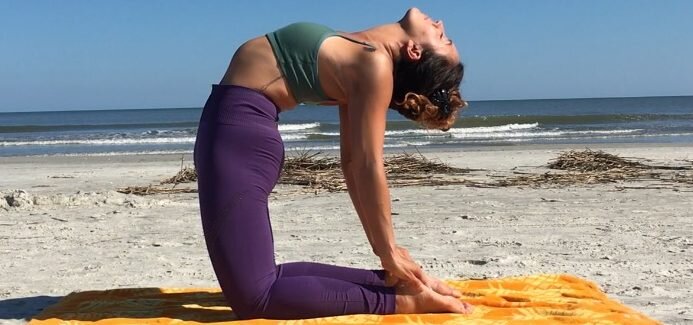Pose of the Month: Ustrasana - Camel Pose
Ustra - Camel; Asana - Pose or seatBy: Juliana Cole, Yoga Instructor & Studio Manager, Yoga Heights Hello, Yoga Heights community! How are you feeling? As you read this post, are you sitting or standing or lying down? Is your spine long, or are your shoulders hunched, or are you currently in a gentle backbend? I invite you to take a moment and check in with your body right now and notice how it feels. What adjustments can you make to feel a little bit better, if any, in this moment? Ok, take a minute to shuffle around and get comfy because we’re going to talk about your spine, and your spine in Ustrasana (camel pose). After reading this sentence, close your eyes, inhale deeply through the nose, hold it in, release the breath slowly out of your mouth, and then open your eyes. Go! I am pretty sure the majority of you reading this blog did some version of a chest opener/mini-backbend in order to release some tension in the shoulders. Why? Because the majority of us hold our stress in our shoulders and find that throughout the day, the fronts of our shoulders gradually roll towards one another and closer to our ears. It is rare, even for short people like me (I’m barely 5’2”), to be encouraged to repeatedly look up, stretching the fronts of our necks, arching the head back and bringing the sternum (the breastbone) to point towards the sky. Then we go to yoga class and hear sighs of relief and crackling bones as we start to roll necks, get into our first cat-cow and gaze up at our hands in our first Sun Salutation. Well, we’re all on the right track - we need to practice opening the front of the body every day! Spine health is one of the most important aspects of aging in a healthy way. Over time, with the help of gravity and regular wear and tear, the vertebra of your spine (or vertebral column) come closer and closer towards one another. Ok, the vertebra are those small bones, with pretty complex structures, that are separated and attached to one another by softer discs (intervertebral discs) that act as a cushion to allow the vertebra to move. Bone density and the discs wear out over time and that’s just the way it is. As we age, the front of the spine wears through the disc more rapidly - think of the hunched shoulders. Although we can’t do anything to rebuild the little parts of the spine that wear down, we can prevent the rapid and excessive wear that comes from the stress we put on our spines. This is where backbending, chest and front-body opening, and most importantly, Ustrasana come in! Before we get into the pose, think of these three principal arches of a backbend: (a) the arch along the vertebral column, top to bottom; (b) the arch across the ribs when they splay open, and; (c) the arch across the front of the shoulders with the middle (upper-chest) is the peak of the arch. You want to engage these three arches in any backbend. Ustrasana is a gentle and easy to access back bend that has many benefits! From the very obvious benefits:
- Opening across the fronts of the shoulders and chest
- Stretching the front of the neck
- Lengthening and stretching the muscles of the abdomen
- Opening the hips and stretching the hip flexors
- Strengthening the back muscles
To the less obvious benefits:
- Creating space along the front of the spine (it’s in extension in a backbend) and loosening the vertebra
- Helps to improve digestion (it’s a gentle massage on the inner organs)
- Can help alleviate pain in the lower back
- Can help alleviate menstrual pain
- Opens the heart chakra!
Here’s how to get into Ustrasana:
- Start by standing on your knees (kneeling) and bring your knees about hips-width distance apart. Your feet can be directly behind you or out a little wider than the hips to encourage an inward rotation of the thighs. You can rest the tops of your feet flat on the floor or raise your heels by flexing your feet and curling your toes under. Raising the heels will bring the floor closer to you, making it a gentler back bend.
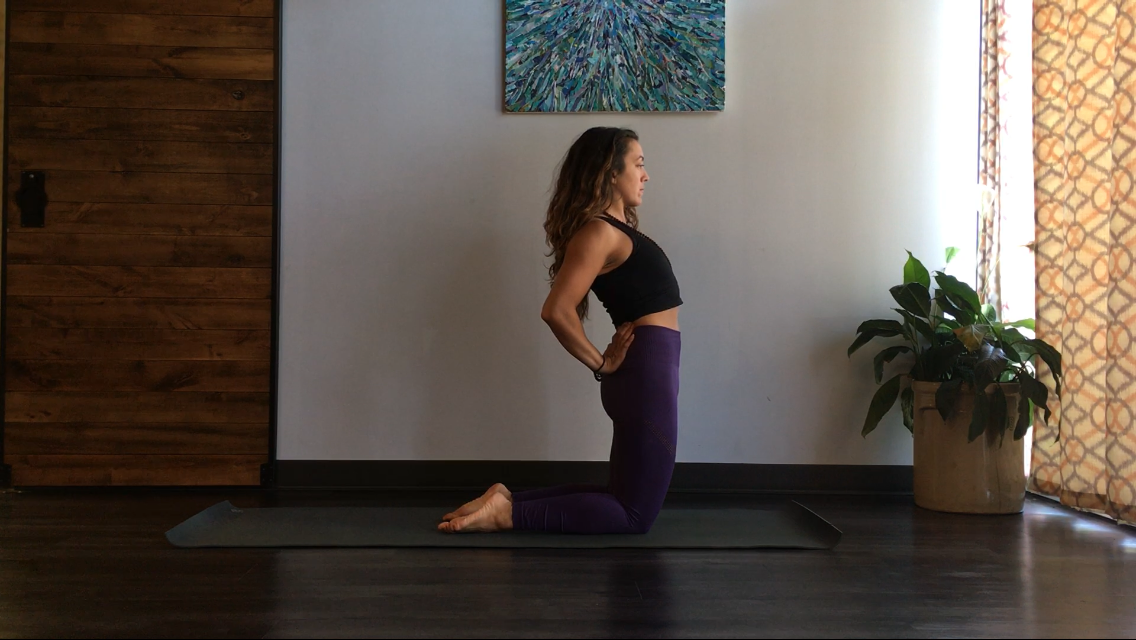
- Bring your hands to your lower back. Your hands should rest on the sacrum (that’s the flat-ish bone at the base of the vertebral column) with the base of the palms pressing into the fleshy part of the upper butt (very technical term). Your fingers should point up towards your shoulders. Already, your shoulders are starting to roll back and down away from the ears and you will feel the expansion across the chest and ribs. You’ve already started, you’re in it and this can be as far as you want to go!
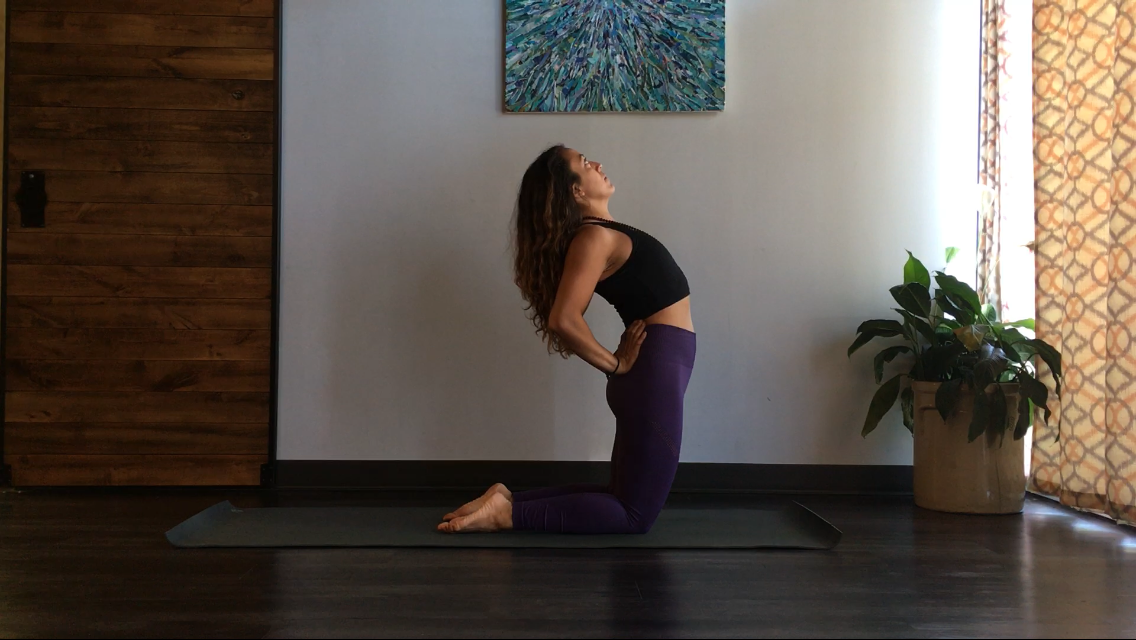
- The legs are important here. You want an inward rotation of the thighs (this is the strong foundation from which you should be lengthening the spine) so start to gently squeeze the thighs towards one another.
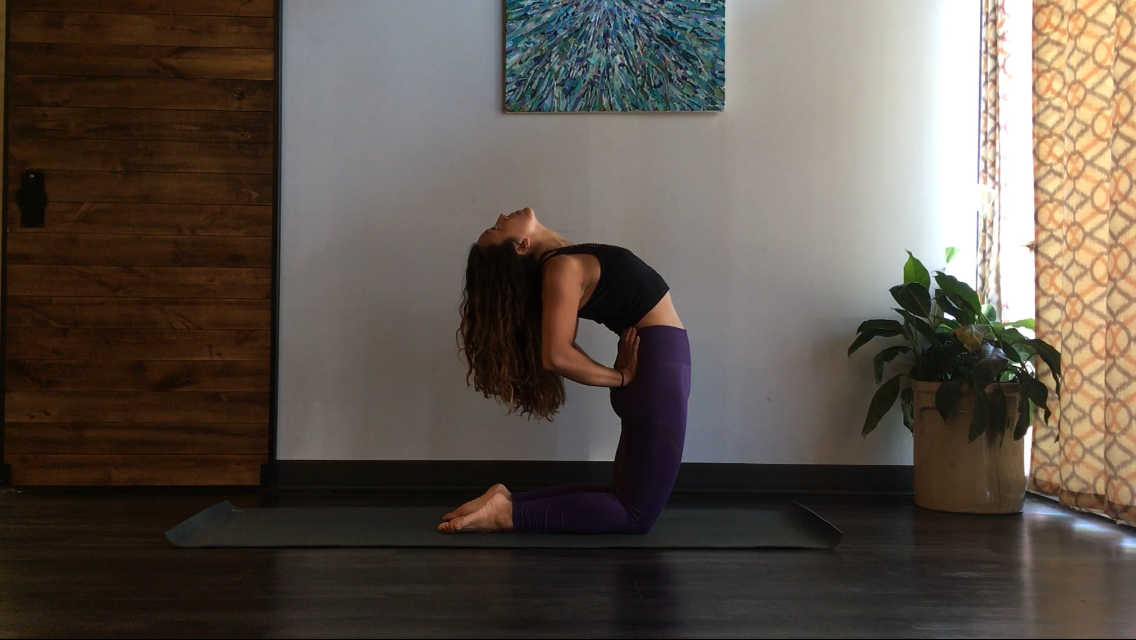
- Now press the palms gently into the sacrum which will start to move the hips forward. You’ll feel the lengthening of the hip flexors here. Lift the ribs, lengthening the spine, and lift the chest as you start to arch back. Again, you can stay right here with the hands at the sacrum as this will support you in avoiding to bend deeply into the lumbar spine (the lower back).
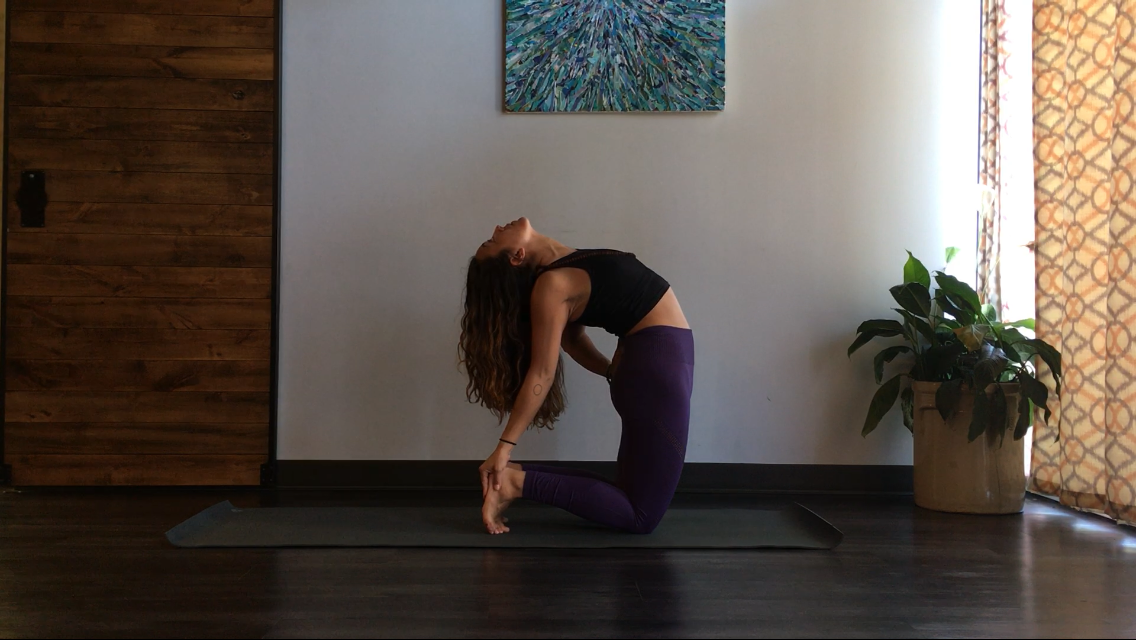
- Final step for the deepest expression of the pose is to drop the head back, stretching the front of the neck, and then release the hands one at a time to the heels. Try to keep the spine long as you bring the hands to the heels. The backs of the shoulders will come closer together and you’ll feel an arch across the fronts of the shoulders. See if you can continue to press the sternum towards the sky and voila, you’re in the full expression of camel pose!
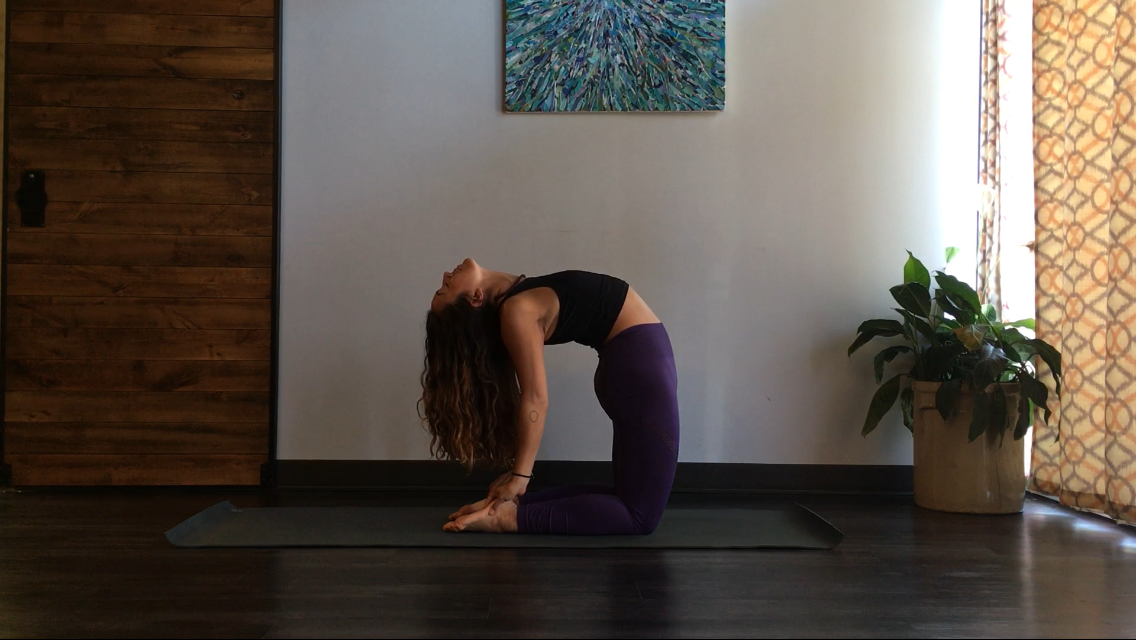
No matter what stage of ustrasana you are in, check in with your body and see if you can find the three principal arches. You can stay here for 10 - 20 breaths! If this is your first time, warm up with the first stage a few times and hold it for up to 10 breaths. Take your time and ease into this pose. When you come out of ustrasana, gently come into child's pose as a counter pose. Now you have a stretched and more balanced vertebral column! My favorite thing about this pose is that pretty much anyone in any condition, any body type and in any stage of life can do this pose. You can also use props, such as a block between the thighs to help focus on the activation of the thighs, or a folding chair as Jules Mitchell uses in this video: https://youtu.be/ZNGPHWiRBxw I recommend doing backbends like ustrasana every day and even multiple times a day. Be careful on your lower back, avoid the pinching sensation that comes from bending too much in the lower back by finding a strong foundation and a long spine. Finally, always counterpose your backbends, enjoy them and breathe deeply when you’re in them. Breathe deeply when you’re out of them...breath deeply all the time! Thanks for reading! Namaste

